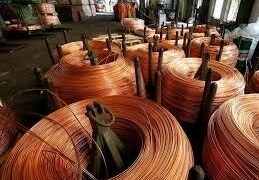Reuters – Chinese investors have been piling up rubber as collateral for financing, recently driving prices to 10-month highs, in what could be a risky bet as warehouses in the world’s top user fill up with a commodity that can only be stored for a limited time.
Copper, zinc and steel have been used as financing tools in China in the past few years, but the move into rubber to back loans has raised concerns about the potential impact on the rubber market from such large inventory overhang.
The financing deals, which have pushed rubber stocks in China to at least 3-year highs, are based on the expectation that China’s economy will grow faster this year and traders who are in such deals would benefit from a rise in prices of rubber or other assets they invest in using the loans.
As much as half of the nearly 328,000 tonnes of rubber sitting in warehouses in Qingdao, a rubber trading hub in eastern China, was tied up in such deals, dealers estimated.
But investors in the rubber play face potential risks from a slower pace of economic growth and rubber consumption.
If automobile sales grow more slowly than forecast, demand from tyre makers, rubber’s biggest users, could also slow, which would hurt prices and force those in the financing deals to sell their stocks to avoid further losses.
“This is going to be a growing risk to the rubber market in the second and third quarters, which threatens to cut prices and undermine the value of banks’ collateral,” said Gu Jiong, a rubber analyst at Yutaka Shoji Co in Tokyo.
China produced and imported 340,000 tonnes more than it consumed in 2012, according to data from the Association of Natural Rubber Producing Countries (ANRPC), an industry body which publishes rubber data.
Imports rose 18 percent to about 3.4 million tonnes last year, according to ANRPC data, helping to lift benchmark Tokyo rubber futures by more than 60 percent from a 3-year trough in August to their highest since March last year on February 6 at around 337 yen a kg ($3.59). Prices have since pulled back about 14 percent on worries about the U.S. and euro zone economies and a volatile yen.
The stocks at Qingdao, with a total value of close to $1 billion (660.9 million pounds), are the highest since at least early 2010 and compare with a low of 145,000 tonnes last April, dealers said. There are also about 102,000 tonnes of rubber in warehouses monitored by the Shanghai Futures Exchange, which are for delivery on futures contracts and are not related to financing deals.
STORAGE HEADACHES
In a typical financing deal, an importer uses a letter of credit to buy a commodity and pledges it as collateral for a bank loan that has to be repaid over 3-9 months.
But rubber can only be stored for about six months before it needs to be re-tested for quality, especially for usage in making tyres. Longer storage raises the risk for holders that the value of the material will have fallen as it deteriorates.
Banks mitigate the risk by loaning the equivalent of only about half the collateral’s value. That compares with non-perishable collateral such as metal, where banks loan more than 80 percent of the value. For perishable commodities such as rubber and foodstuffs, banks also appoint collateral managers to oversee the stocks and monitor the market.
The total exposure of banks to the rubber stocks in Qingdao amounts to around $260 million, according to Reuters’ calculations. That assumes half the rubber stored has been used for financing and that banks loan about half the value of the product. That would be just a fraction of banks’ total loans in China of 67.3 trillion yuan (7.12 trillion pounds) as of end-2012.
Chinese and international banks, including Industrial and Commercial Bank of China (1398.HK), Standard Chartered (STAN.L) and Australia and New Zealand Banking Corp (ANZ.AX), are active in commodities financing, according to the lenders’ websites. It was not clear if these banks also financed rubber purchases.
The risk of any unwinding of the lending scheme causing a string of defaults on Chinese rubber purchases from top producers such as Thailand or Indonesia should be limited as sellers tend to deal with regular buyers and some ask for down payments.
AUTO SALES MAY BE KEY
China’s auto sales rose 4.3 percent last year to 19.3 million vehicles, half what was expected by the China Association of Automobile Manufacturers (CAAM) at the start of the year, as the economy grew at its slowest since 1999 and political tensions between Beijing and Japan hit demand for Japanese cars. [ID:nL4N0AN0AK] Sales had grown more than 30 percent in 2009 and 2010.
The CAAM expects sales to climb 7 percent in 2013, although moves by local governments in China to restrict car sales to help ease traffic gridlock could trim growth.
Tyre makers may need time to grind down their own inventory before making fresh purchases if vehicle sales slow. Tyre makers do not disclose inventory levels and these could not be independently ascertained.
China’s economy started the year on a brighter note, with January exports and imports and new lending surging, but the numbers may have been distorted by the Lunar New Year holiday in early February, economists said.
The China Rubber Industry Association has forecast rubber consumption growth of 5 percent for 2013, slower than the 7 percent forecast for last year. Final figures for 2012 are not yet available.
“Rubber consumption (in China) will still grow this year, but prices are under pressure because growth in production is going to be higher than growth in consumption,” said Chen Ruibi, analyst at Shanghai CIFCO Futures.
(Additional reporting by Kelvin Soh and Prakash Chakravarti in Hong Kong, and Fayen Wong in Shanghai; Editing by Muralikumar Anantharaman and Ed Davies)
Source: Reuters



























